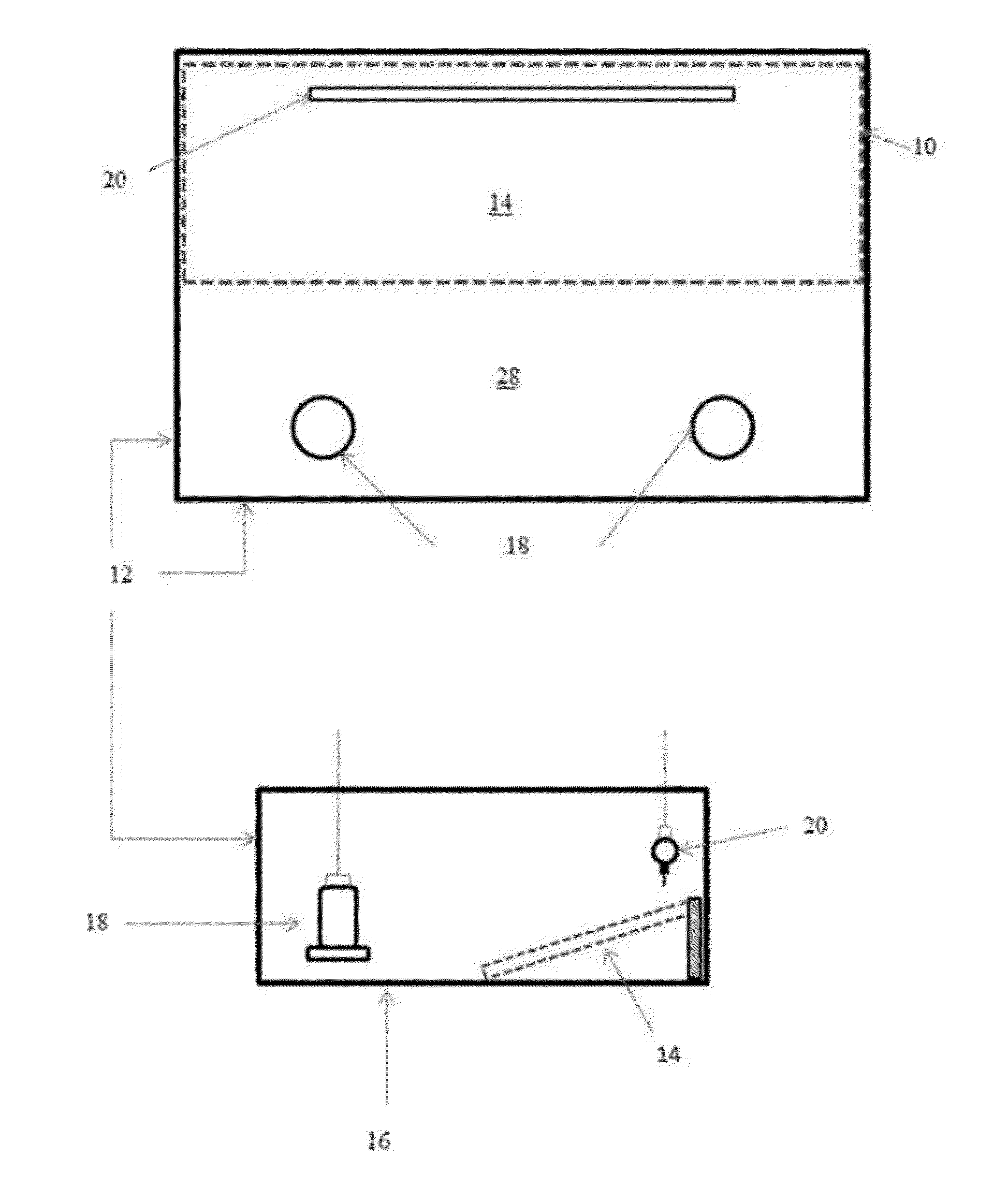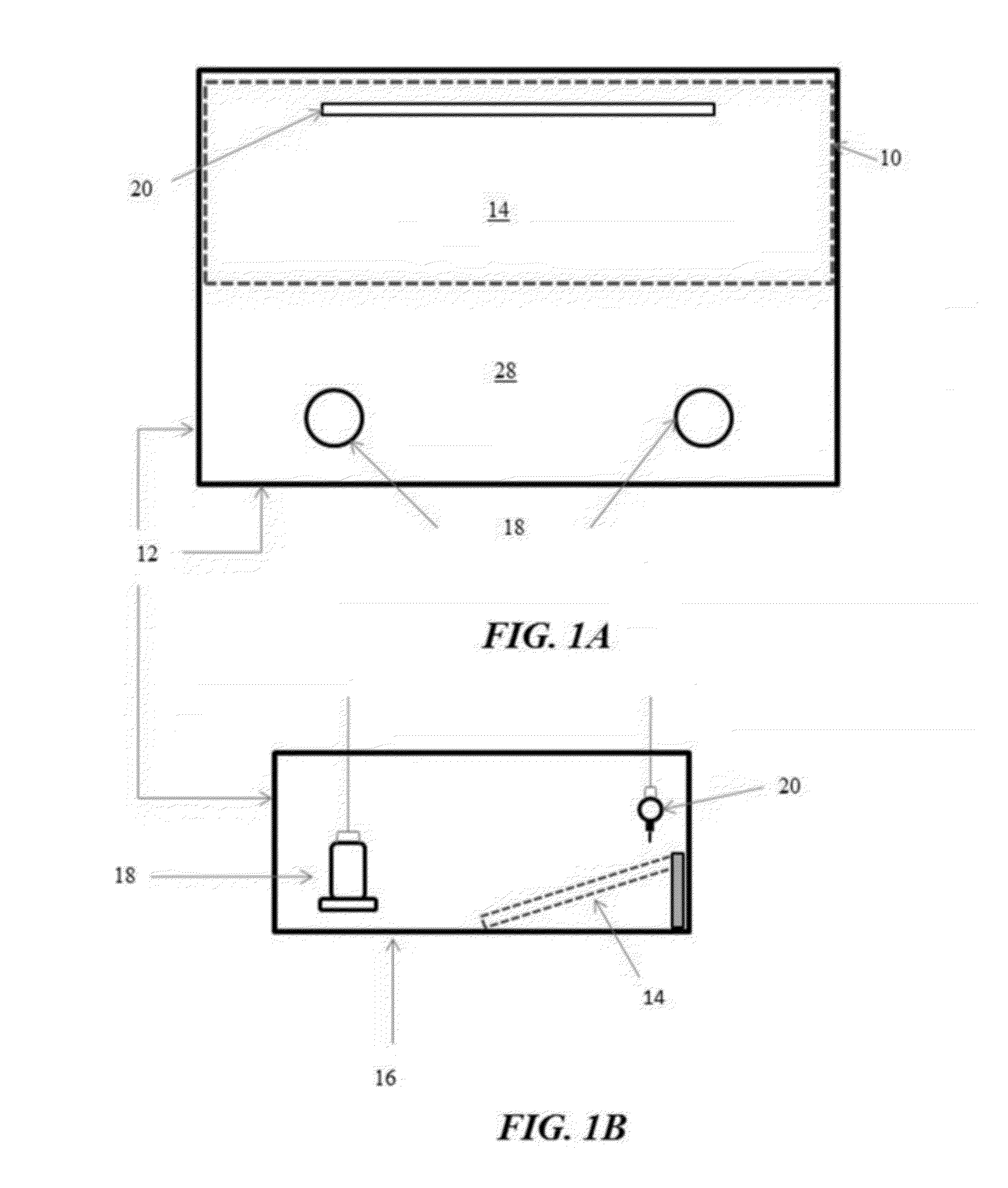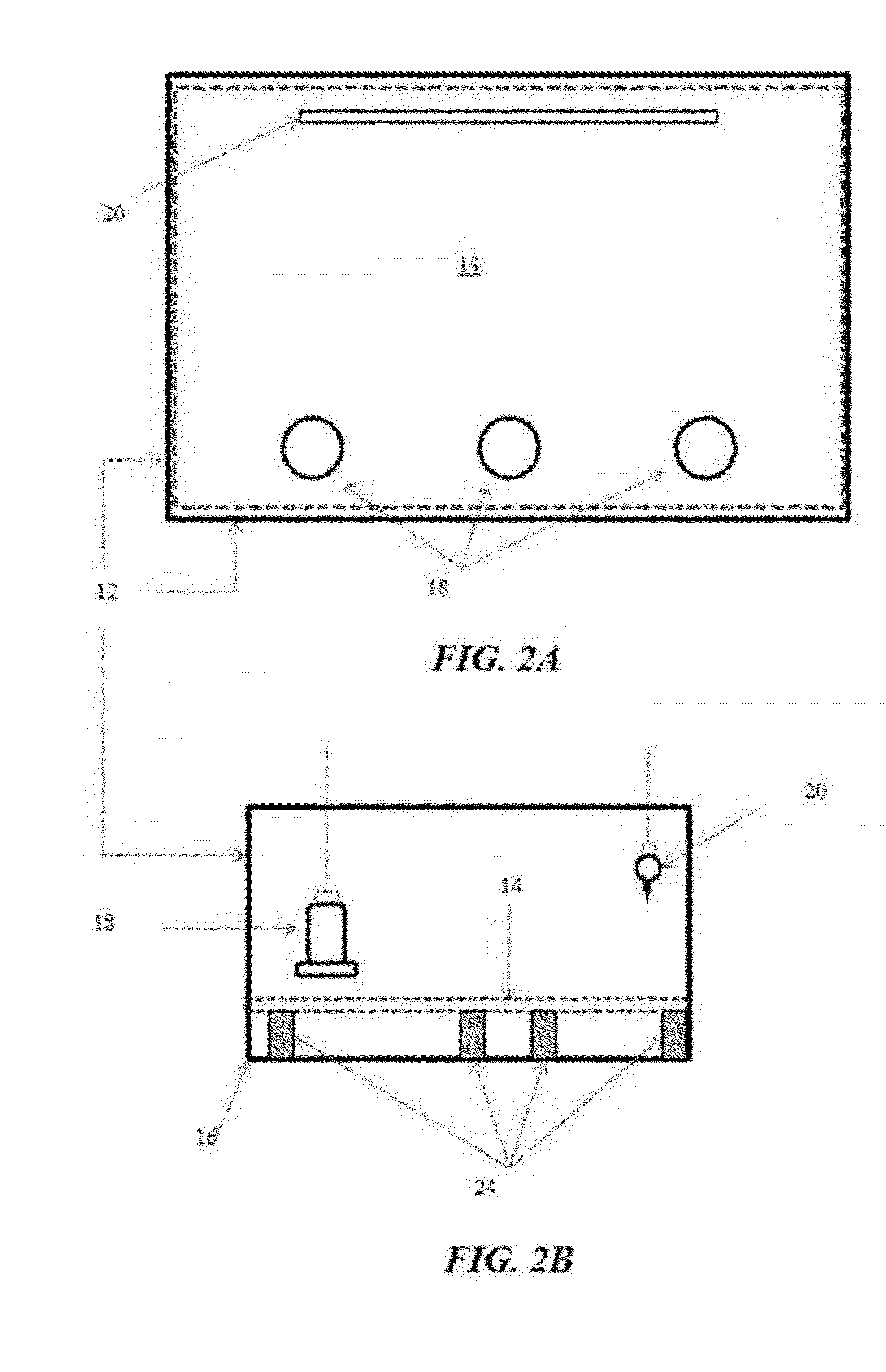Flooring challenge systems for culling poultry
a challenge system and culling technology, applied in the field of culling poultry, can solve the problems of micro-fractures that disrupt the cartilage layer, focal pain and further damage, and the development of micro-fractures in the epiphyseal plate and subchondral bon
- Summary
- Abstract
- Description
- Claims
- Application Information
AI Technical Summary
Benefits of technology
Problems solved by technology
Method used
Image
Examples
example 1
[0092]The objective of this experiment was to develop a model for inducing a reliably high incidence of lameness in fast growing broilers. To accomplish this, wire flooring panels were constructed to create sporadic unstable footing in broiler pens. Rectangular frameworks were constructed from 5 cm×5 cm lumber. Each frame was 3.05 m long and 1.52 m wide, with 5 cm×5 cm cross members added for support. Hardware cloth (1.3 cm×2.54 cm mesh) was fastened to the frame and cross-members. Ten pens (3.05 m×3.05 m) were set up with floor litter only and ten pens were set up with half litter and half wire-frame floors (FIG. 1). In addition, one half-sized pen (1.52 m×3.05 m) was setup with a flat all wire flooring panel (FIG. 2), and a standard sized pen (3.05 m×3.05 m) was setup with an A-Frame all wire floor (FIG. 4).
[0093]For the first 2 weeks all flooring panels were flat on the pen floor. Three tube feeders were positioned on one side of the pen and a nipple waterer were positioned on th...
example 2
[0107]A study was conducted to evaluate the incidence of lameness in broilers from Lines C and D grown to 56 days of age in pens with either wood shavings litter or flat wire frames covering the entire floor. A significantly higher incidence of lameness was demonstrated for broilers grown on flat wire flooring than for broilers grown on litter (26% vs. 7%, respectively; lines pooled), and the incidence of lameness was higher in Line C than in Line D (21% vs. 12%, respectively; floor treatments pooled). FIG. 14 graphically illustrates the time course of lameness (percentage incidence between 14 and 56 days of age) for broilers from two genetic lines (Line C and Line D) that were reared on traditional wood shavings floor litter (Floor Litter), or were reared in pens with flat wire flooring (Line C—Flat Wire Floor, Line D—Flat Wire Floor). The flat wire flooring configuration induced incidences of lameness that were significantly higher (P=0.001) than in the traditional floor litter pe...
example 3
[0151]Building A364 East on the University of Arkansas Poultry Research Farm was set up with 24 standard-sized pens (3.05 m×3.05 m). As shown in FIG. 26, pens 1, 6, 12, 13, 18, and 24 were set up with flat wire flooring. All of the remaining pens were set up with clean wood shavings litter. Tube feeders will be provided on one side of the pen and nipple waterers were positioned on the other side of the pen. This arrangement forces the chicks to traverse the floor repeatedly to drink and eat. Chicks initially were placed at 65 per pen and then culled to 60 per pen on day 14. Also at 14 days of age speed bumps having a height of approximately 6 in, 9 in, and 12 in were inserted into the pens designated in FIG. 26 as SB1 (33% slope), SB2 (50% slope) and SB3 (66% slope), respectively. Pens 2, 7, 11, 14, 19, and 23 have floor litter only. All chicks were grown as rapidly as possible throughout the experiment (23 hours of light, full feed, optimal temperature and ventilation conditions). ...
PUM
 Login to View More
Login to View More Abstract
Description
Claims
Application Information
 Login to View More
Login to View More - R&D
- Intellectual Property
- Life Sciences
- Materials
- Tech Scout
- Unparalleled Data Quality
- Higher Quality Content
- 60% Fewer Hallucinations
Browse by: Latest US Patents, China's latest patents, Technical Efficacy Thesaurus, Application Domain, Technology Topic, Popular Technical Reports.
© 2025 PatSnap. All rights reserved.Legal|Privacy policy|Modern Slavery Act Transparency Statement|Sitemap|About US| Contact US: help@patsnap.com



